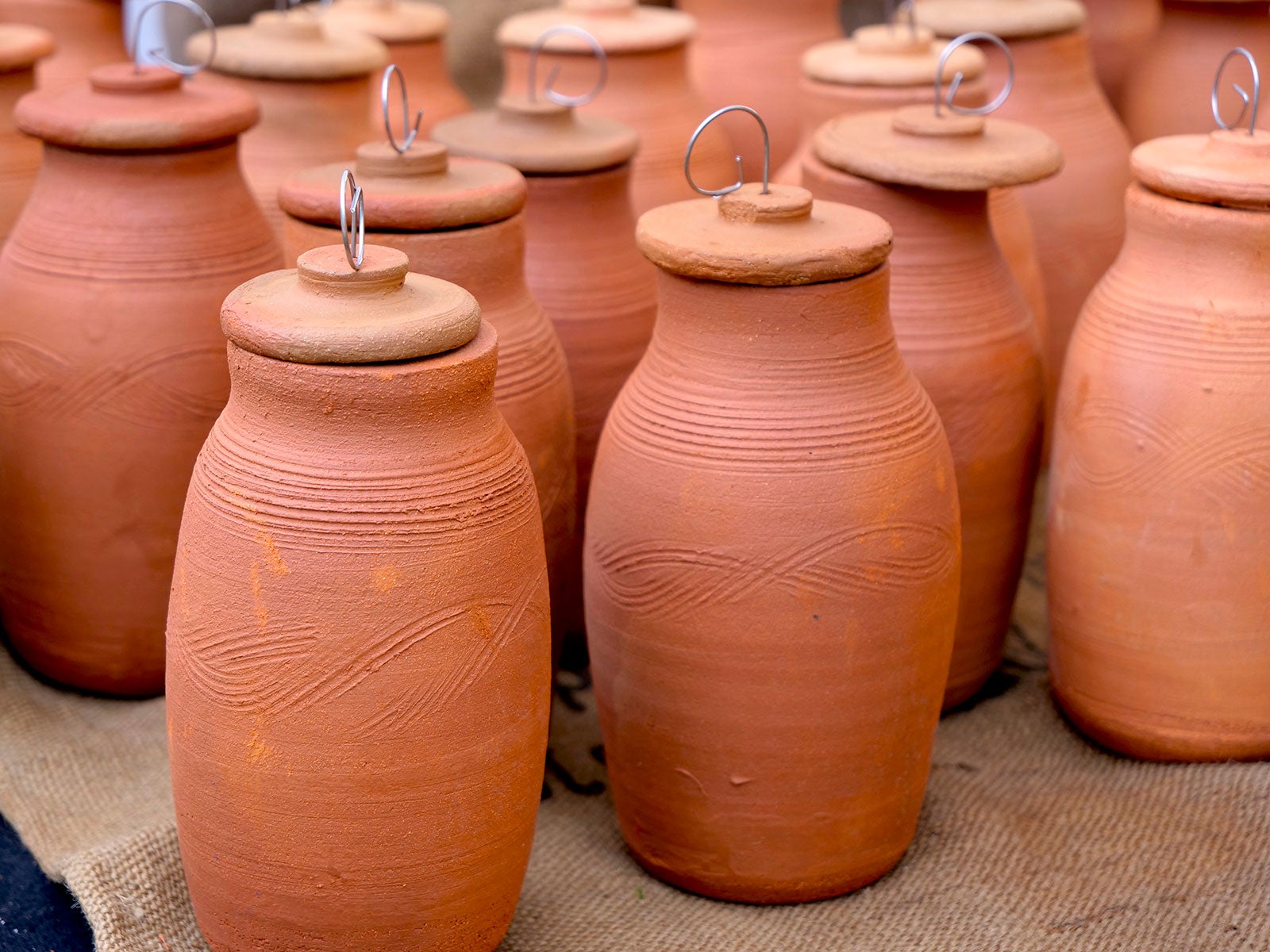How To Overwinter Ollas For Years Of Use: Get More From Irrigation Pots


Overwinter ollas properly, and you can keep these watering pots from cracking in cold or fluctuating winter temperatures. An olla watering pot is a unique irrigation system that efficiently distributes water to plant roots in the soil. When you bury an olla pot in the ground and fill it with water, dry soil draws water from the pot, keeping plant roots hydrated.
Efficient and eco-friendly, ollas conserve water and reduce the time you need to spend watering, providing only as many fluids as your plants need. But if you don't take care during the winter months, these pots might fail or break. Find out how to overwinter ollas so they last for longer.
Can You Leave Olla Pots in the Ground Over Winter?
Burying a large olla in the garden takes some effort, so it would be nice if you could leave it in place for the dormant season. However, during the cold weather, olla watering systems might crack. The freeze-thaw cycle that is common in many regions is damaging to clay and terracotta.
Ollas are designed to be sturdy and durable, with thick walls. But because they are made of terracotta, they are vulnerable to changing temperatures. They are designed to withstand cold climates, but they are not completely invulnerable – so it's important that you take some precautions ahead of winter.
How to Overwinter Ollas The Right Way
Cold weather olla irrigation below certain temperatures isn't recommended. For most plants, winter watering is less of a regular requirement, anyway. The most important thing you can do to keep the pot safe over winter for use again in spring is to remove the water. Empty the olla about two weeks before the first frost of the season to be safe. Water that freezes in the pot will likely crack it.
The next step in helping to overwinter ollas is to provide some insulating cover to protect the pots from the coldest temperatures. Place a layer of straw over the top of it, or invert a bucket over it to keep some heat in the soil around the pot. If you have very cold winters, you should use both straw and a bucket.
It's also important to know your local climate. If you live somewhere with sudden changes in temperature, such as rapid freezing right after a rain, you should consider digging up your olla for winter. Taking steps to store containers for winter is the best way to ensure they will survive for the following year. Store ollas in a dry spot with temperatures that will remain above freezing.
Gardening tips, videos, info and more delivered right to your inbox!
Sign up for the Gardening Know How newsletter today and receive a free copy of our e-book "How to Grow Delicious Tomatoes".
How Long Do Olla Pots Last?
If you take good care of an olla pot, it should work for years. They are made with thick, durable walls. The trick is to make sure you have created safeguards for any sudden or dramatic dips in temperatures. So taking time to overwinter ollas will directly extend their life span and keep them functioning at their best.
To ensure these pots last as long as possible, you also need to keep them clean. Use the lid to keep debris out and remove anything that does fall into the pot. If it gets very dirty, and you can’t easily remove debris, dig out the olla and use a hose and scrub brush to clean it. If you have hard water, it's important to clean out the olla regularly to remove mineral buildup:
- Dig out your pot and fill it with a mixture of equal parts water and vinegar for cleaning.
- Let it sit with the solution inside, long enough for it to penetrate the walls of the olla. In low-humidity conditions, this might take a few hours. In high humidity, let it sit up to 24 hours.
- When you're happy the solution has had time to work its magic, scrub the inside and rinse the pot.
- Refill the pot with plain water, and let it sit for a few hours to a day. Once the walls have saturated with plain water to remove the vinegar, the olla is ready to go back into the ground.
An olla can be an efficient, easy way to water vegetable and flower beds. You can use these irrigation systems for xeriscape gardens, and you can use small ollas in container gardens. In many locations, you can leave the pots in place in winter, but apply common sense. Lifting and storing is best if your winters are very cold or if drastic temperature changes are forecast. This way, your ollas will still be at their best for next year's crops and ornamentals.

Mary Ellen Ellis has been gardening for over 20 years. With degrees in Chemistry and Biology, Mary Ellen's specialties are flowers, native plants, and herbs.